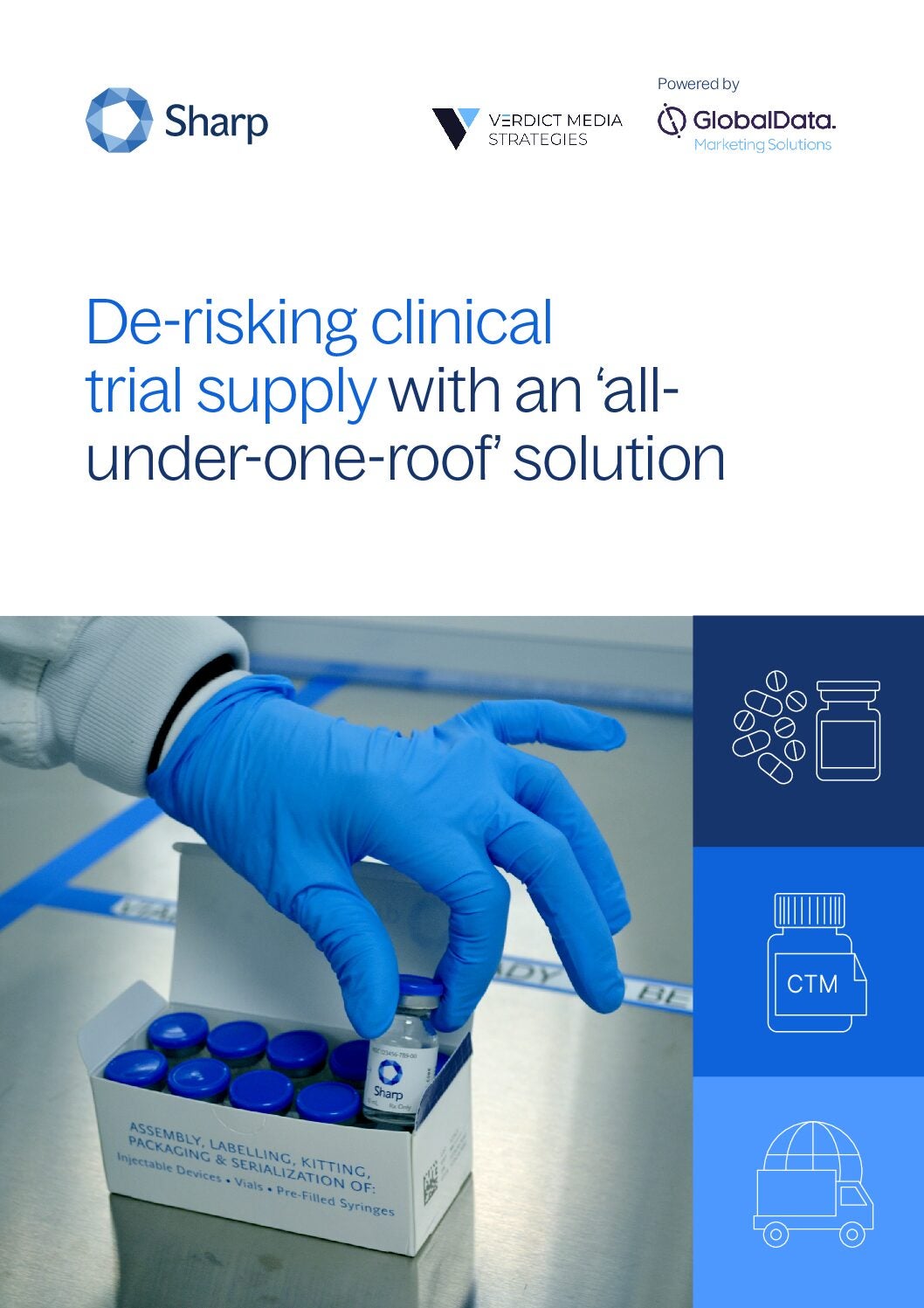
When preparing for an upcoming drug development program, leveraging existing knowledge and strategies to streamline the process from concept to market is essential. One effective approach is platform development, which utilizes pre-established formulations, analytical methods, and manufacturing processes. This strategy provides a flexible foundation for multiple products, helping teams build on successful systems. This can result in expedited timelines, minimized risks, and consistent quality while also allowing for necessary customizations specific to each molecule.

Robert Feltz is Director of Analytical and Formulation Services at Sharp Services, a CDMO and CPO serving pharma and biotech companies from the preclinical stage all the way through to commercial packaging. With over 18 years of experience in the pharmaceutical industry, he brings scientific and managerial oversight across Sharp Clinical’s product development, analytical services, and small molecule manufacturing teams.
In the following article, he shares ten critical questions a sponsor should consider before launching their next drug development initiative.
1. What are the timeline constraints currently impacting your development program?
Why this matters: Most development teams face tight schedules, often targeting an IND filing within six to nine months. Implementing a platform can help mitigate the common trial-and-error issues faced in early formulation and analytical testing, ultimately saving both time and financial resources by allowing teams to start with established formulations, analytical methods, and manufacturing processes, significantly reducing the time spent on method development, formulation screening, or tech transfer troubleshooting. By building on a well-characterized foundation, teams can skip many of the iterative experiments required to reach a viable formulation or a robust assay. This enables earlier initiation of GMP manufacturing and stability studies. In essence, a platform reduces uncertainty and compresses timelines by removing unnecessary steps from the development process.

2. How does your molecule fit within existing formulation or manufacturing platforms, and where might you require customization?
Why this matters: Many active pharmaceutical ingredients (APIs) fall under BCS Class II or BCS Class IV categories, presenting solubility challenges. However, they may still align with existing tablet platforms. Focus on adjusting the release profile and assessing excipient compatibility without overhauling the entire process. Customization may be required when the API’s solubility or stability profile doesn’t align with the excipient system or process parameters of the platform. For example, you might need to modify the granulation technique, adjust disintegrant levels, or incorporate a solubility enhancement strategy like solid dispersion or marinization. The goal is to tailor key variables—like release kinetics or moisture sensitivity—while still preserving the underlying structure of the platform to maintain speed and efficiency.
3. What lessons have you learned from prior development programs that could guide a more efficient approach this time?
Why this matters: Often, teams spend excessive time optimizing formulations only to discover that a standard excipient system could have sufficed. Additionally, delays can occur when transferring analytical methods. Applying past insights can help create a more structured and efficient development process. An experienced CMC professional might recognize that over-customizing early formulations often leads to unnecessary delays, especially when simpler, well-characterized systems would meet phase-appropriate needs. They’ve likely seen analytical methods fail during transfer due to poor robustness or lack of early lifecycle planning. These lessons reinforce the value of starting with a platform that’s already been tested under GMP conditions, using methods designed with scalability and transferability in mind. Prior experience teaches that early pragmatism—paired with phase-appropriate flexibility—can prevent costly rework and keep timelines on track.
4. How will you address scalability as your product transitions from early-phase development to late-phase and commercial manufacturing?
Why this matters: Strive to minimize significant changes between Phase I and Phase III. Initiating a project with a platform designed for scalability can help prevent reformulation or revalidation issues later on, facilitating a smoother transition from clinical stages to commercialization. Scalability is often where early decisions pay off—or become costly. Starting with a platform built on scalable processes and equipment reduces the likelihood of needing major formulation or process changes as batch sizes increase. This helps avoid revalidation, additional stability studies, and rework that can delay later-phase development. A well-designed platform also aligns with commercial manufacturing capabilities from the outset, making it easier to transfer processes, maintain product consistency, and meet regulatory expectations for comparability across phases. Ultimately, it supports a seamless progression from lab-scale to commercial supply.
5. What systems do you have in place to ensure regulatory alignment from the early stages of development?
Why this matters: A small internal team may rely on external partners to stay updated with evolving regulatory guidelines such as ICH Q14 and Q2(R2). Small teams often juggle multiple priorities with limited bandwidth, making it difficult to track evolving regulatory expectations or build extensive documentation from scratch. Without dedicated regulatory or quality specialists, it’s easy to overlook key requirements like method lifecycle management, specification justification, or stability protocol design. Partnering with a provider that embeds ICH-aligned practices into their platform reduces that burden. It ensures the foundational elements—like method validation approaches and risk assessments—are already structured to meet regulatory scrutiny, giving smaller teams the confidence to move forward without compromising compliance. Collaborating with a partner that offers a platform adhering to these standards can be advantageous, particularly when justifying specifications and methods.
6. Where are you allocating time and resources that could benefit from optimization through a proven framework?
Why this matters: Organizations often spend too much effort reevaluating basic formulation parameters and recreating standard assays. You can redirect resources to more critical areas, such as bioavailability or stability optimization, by standardizing these elements from the outset. Bioavailability and stability are two of the most critical factors determining whether a drug will succeed in clinical trials and eventually reach patients. If these aspects are not optimized early, they can lead to poor in-vivo performance, failed studies, or product instability that derails development timelines. By freeing up time and resources through the use of a standardized platform for formulation basics and core analytical methods, teams can focus their energy on where it truly matters: enhancing absorption for poorly soluble compounds or building robust formulations that maintain potency over shelf life. Prioritizing these areas early can significantly de-risk the program and support long-term success.
7. What level of flexibility do you require in your development process, and how can a platform approach provide structure and adaptability?
Why this matters: Flexibility is essential, as each molecule is unique and requires a tailored development process. However, a structured approach is equally important, particularly for documentation, validation, and manufacturing. Think of a platform approach like building a custom home on a pre-engineered foundation. The foundation is strong, reliable, and built to code—it saves time, reduces risk, and ensures everything stays aligned as construction progresses. But above that foundation, you can still design your home to meet your specific needs: the layout, materials, and finishes are entirely up to you.
In the same way, a pharmaceutical platform provides a solid structure—standardized methods, validated processes, and regulatory-aligned practices—that support the program’s success. Yet it also allows for molecule-specific adjustments, such as modifying a release profile or tailoring assay sensitivity. You’re not locked into a rigid system; instead, you’re gaining efficiency and consistency where it matters most while retaining the freedom to customize your development path based on the science of your molecule. This balance of structure and adaptability is what makes platform approaches so powerful—especially for teams that need both speed and precision. A customizable platform can strike the right balance, allowing for repeatable success while accommodating necessary adjustments.



